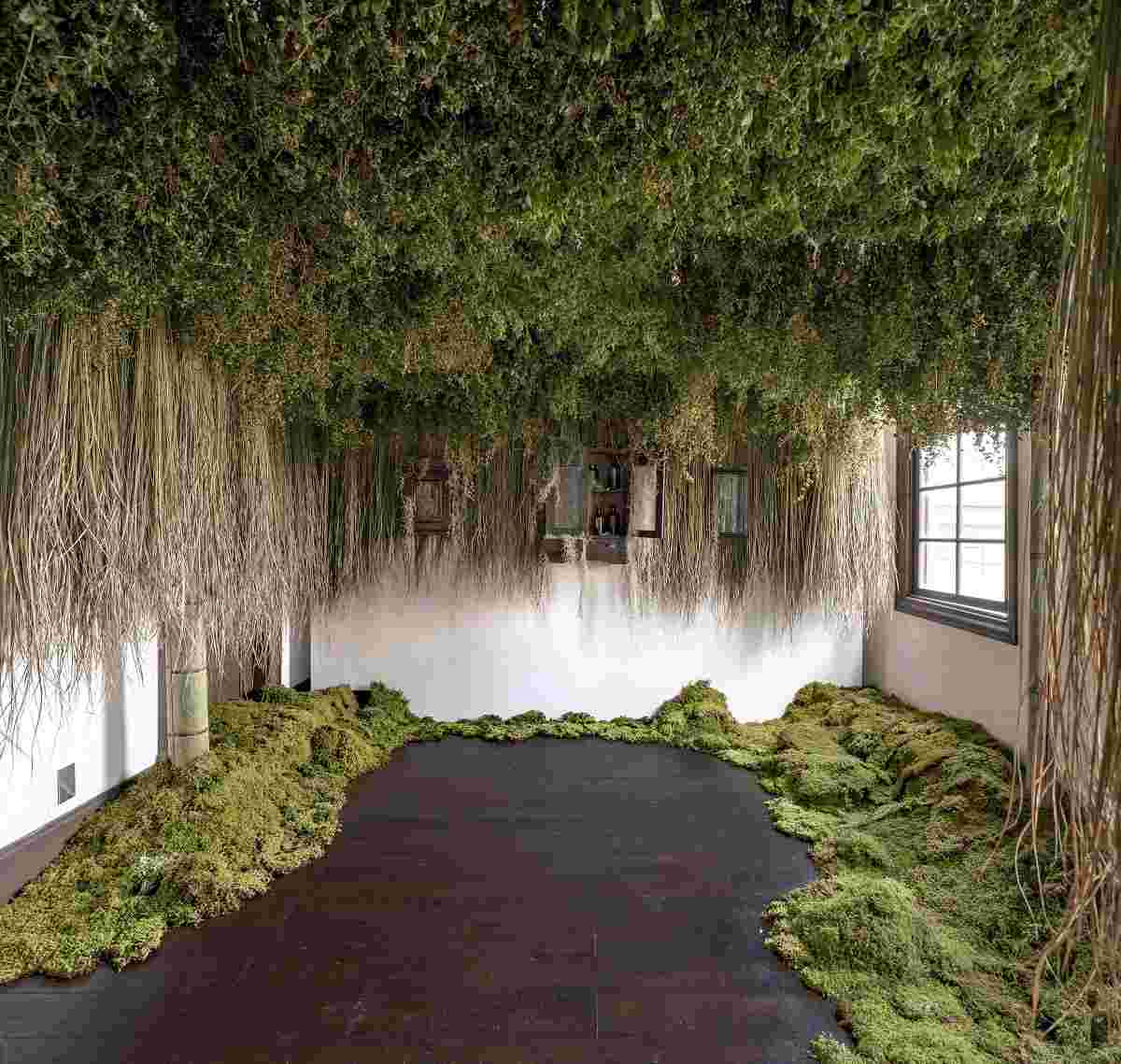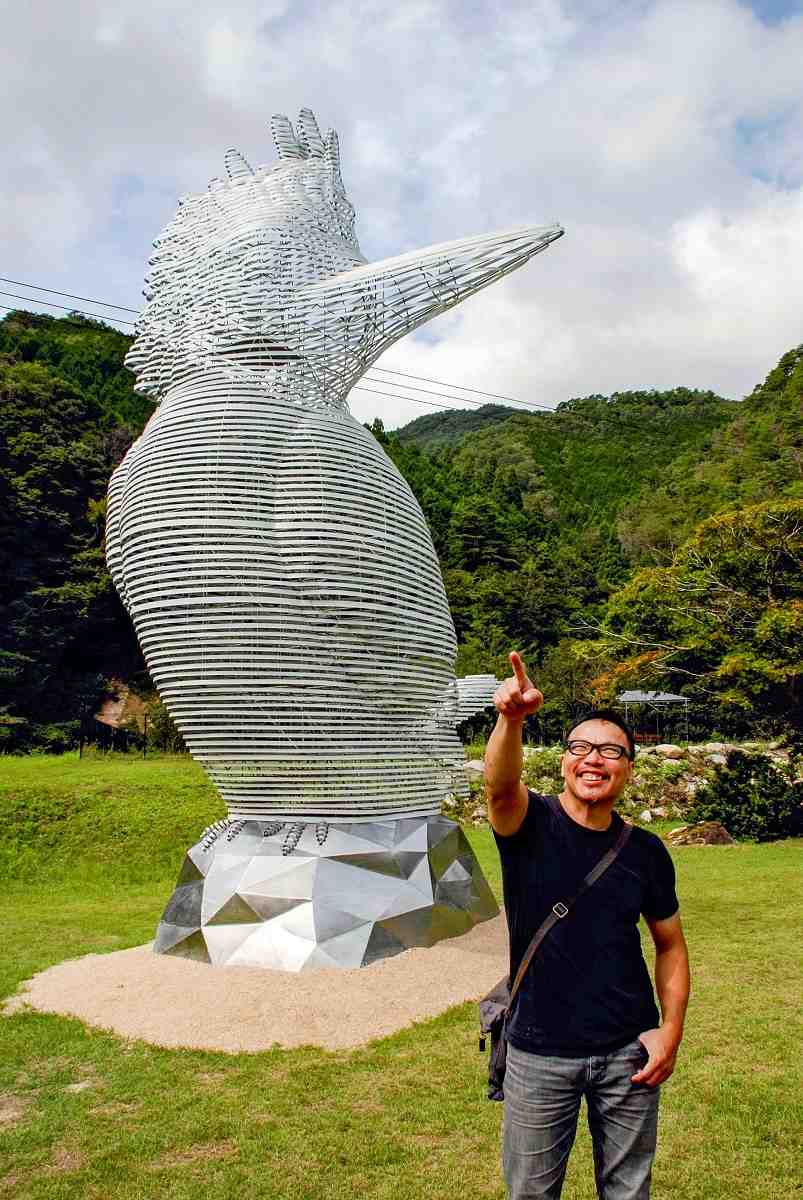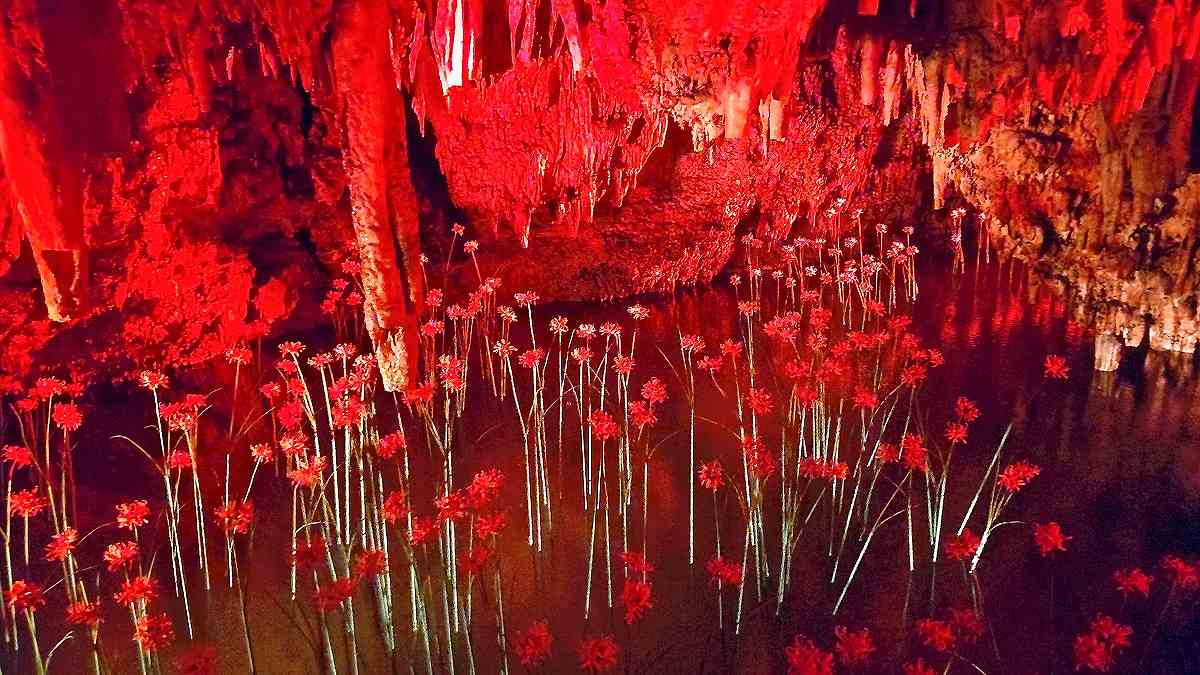Leandro Erlich walks on a suspension bridge, surrounded by greenery, at his installation.
13:40 JST, November 18, 2024
An international art festival featuring contemporary artists at the forefront of the art scene is being held until Nov. 24 in 12 municipalities across northern Okayama Prefecture.
The Forest Festival of the Arts Okayama: Clear-skies Country is being held for the first time, with the aim of using the power of art to discover “assets” hidden in the nature-rich environment of mountain areas. The art festival is expected to help revitalize the region and attract tourists.

Bianca Bondi’s “Forest Bathing”
Yuko Hasegawa, the director of the 21st Century Museum of Contemporary Art, Kanazawa, serves as the art director, curating the event and taking charge of selecting participating artists. Forty-three up-and-coming artists, including solo and group artists, from 12 countries and regions are participating in the art festival, including photographer and film director Mika Ninagawa and Leandro Erlich from Argentina.
Many of the works exhibited are related to forests because around 70% of the prefecture’s land is forested. Bianca Bondi from South Africa filled the inside of a Western-style hall of a former hospital in Tsuyama with plants, trees and moss to turn it into a forest-like space full of the aroma of plants.

Chien-Chung Liao poses near his work, “Echoes in the Mountains.”
Erlich, who is known for his works using optical illusions to explore our perception of reality, created an installation in Nagi. Fake trees, hanging upside down from the ceiling, are reflected in mirrors that cover the entire floor. This green space emphasizes the rich natural environment that people often take for granted.
Chien-Chung Liao from Taiwan created a roughly 6.5-meter-high sculpture of a crested kingfisher, a bird used as a symbol the town of Kagamino. Magnolia kobus trees, planted inside the sculpture, help highlight the rich natural environment in the region.
Anri Sala from Albania and a group led by Ninagawa laid out installations inside limestone caves, as if collaborating with the Earth’s creations.
Ninagawa and her team created a fantastical landscape by placing numerous fake red spider lilies on a red-illuminated pond in the Makido limestone cave in Niimi.

This limestone cave installation was created by the creative team led by Mika Ninagawa. Illumination and numerous fake spider lilies create a fantastical landscape.
Sala’s work allows viewers to feel they are exploring the 1,200-meter Ikurado limestone cave filled with lights and the sounds of musical instruments.
Food has also been made into art.
Rirkrit Tiravanija from Argentina collaborated with local chefs to make bento box meals using locally-produced ingredients. The bento boxes are offered at the Shurakuen Garden in Tsuyama, presented as works that combine food with local cultural assets.
These works combine art with local resources, including nature, sightseeing spots and food, which makes them unique to Okayama. It can be said that this is a regional art festival aimed at uncovering seeds of revitalization for the region. “Art helps us find local stories and visualize local attractions,” Hasegawa said. “Art also helps us notice overlooked resources and gives us clues to create new resources for life.”
The northern part of Okayama Prefecture, where the art festival venues are located, does not have major industries compared to the southern part, which is home to cities like Okayama and Kurashiki. The region has been increasingly depopulated in recent years. The Forest Festival of Arts Okayama is widely expected to help attract tourists to the area, just like other art festivals in depopulated areas.
Okayama Gov. Ryuta Ibaragi said, “While the area is not easily accessible, I think there is a chance of the festival being successful.” He said he had been encouraged by the success of other regional art festivals, such as the Setouchi Triennale, in which over 700,000 people from all over the world visit islands in the Seto Inland Sea.
However, when asked whether the festival would continue to be held in the future, the governor showed caution, saying, “I would like to make the decision in a comprehensive manner, taking into account various factors such as the number of visitors, their feedback and the impact on local communities.”
Some local art festivals ended up being one-off events, including Ibaraki Prefecture’s “Kenpoku Art 2016.” The art festival was discontinued because it was unclear whether the event was truly effective in helping the sustainable development of the local community.
Art festivals are ephemeral, and their success or failure can be said to depend on post-festival efforts.
This post was originally published on here






